Replacing a front door — industry experts explain how to choose the right option to maximise your home’s kerb appeal
If you need to replace your front door, this guide will help you choose the option that best suits your home and your budget
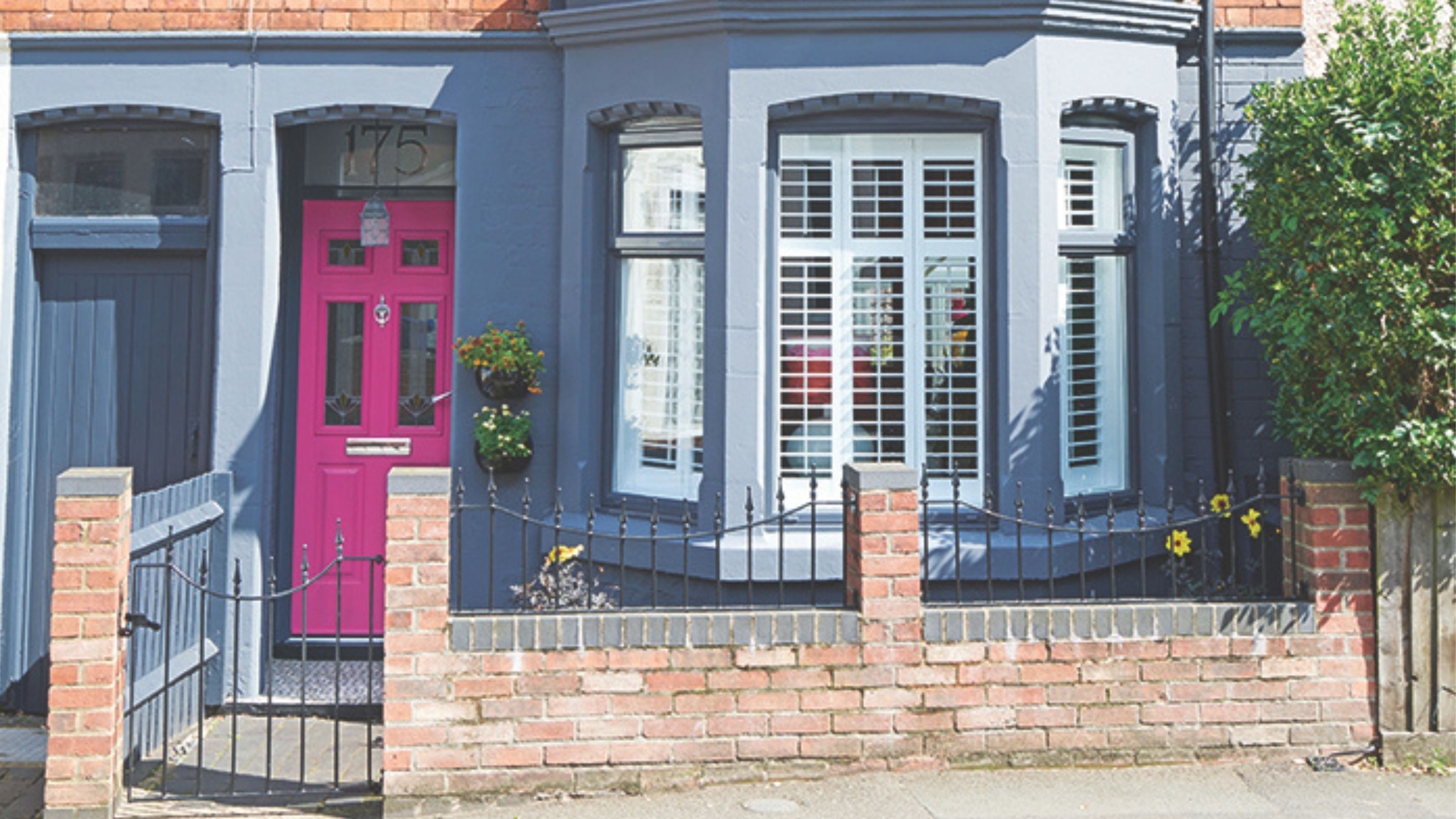

Rhoda Parry
If the entrance to your home is looking tired and seems ineffective, then it's a strong sign that you should think about replacing your front door.
Embracing a new front door idea can be done as an isolated task or you could tackle it when you're replacing your windows too, to boost your home's kerb appeal and improve it's efficiency at the same time.
While style is important when it comes to choosing a new front door, it's not the only factor that should be considered. You'll want to think about energy efficiency, security, and how much a new front door costs. To help you decide, we've broken down all you need to know to choose a front door that sets the right tone for your home, and offers the best performance in terms of functionality.
Types of replacement front doors
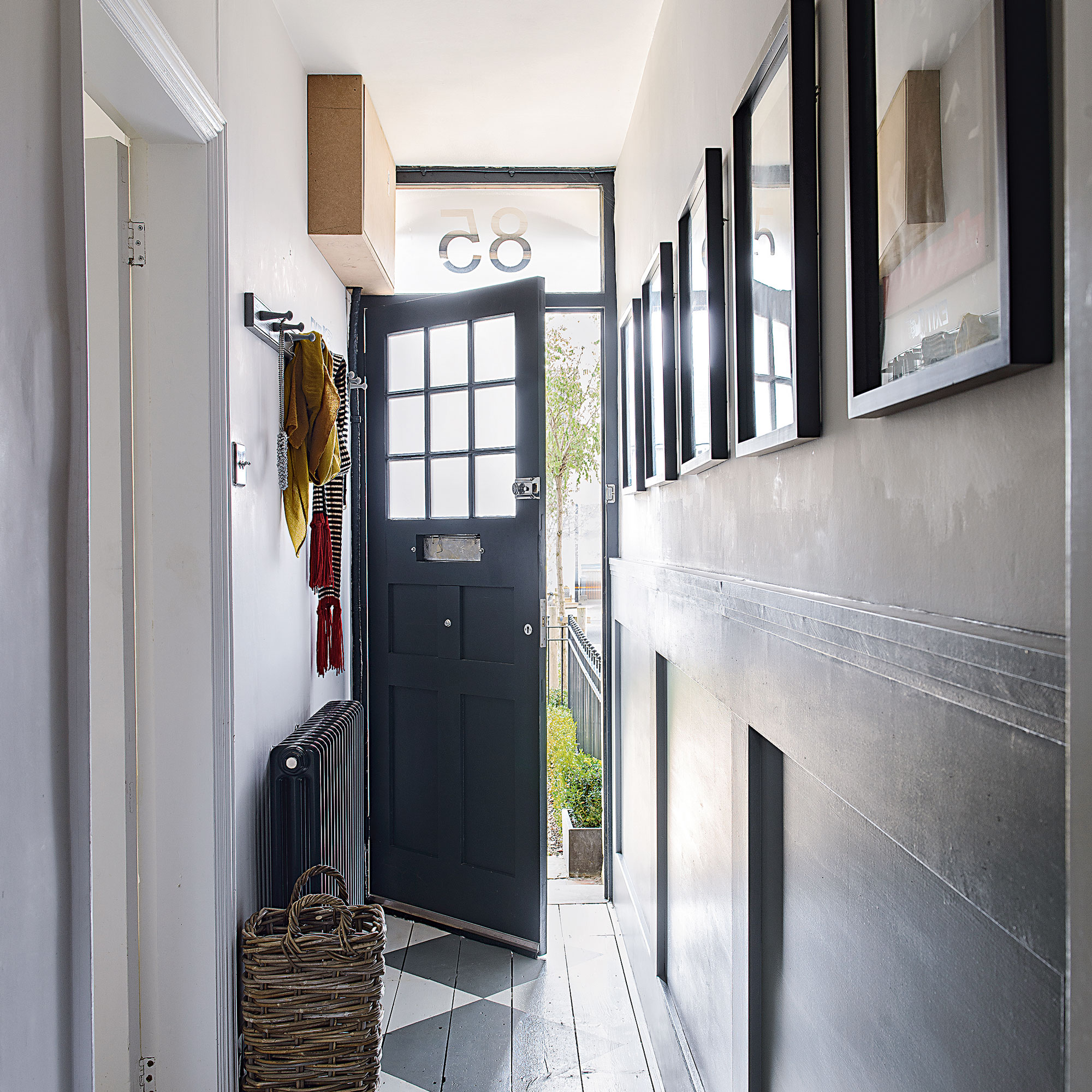
One of your first decisions will be around what type of replacement front door you want, and this will usually come down to material in the first instance.
Each material has its down set of benefits and drawbacks when it comes to look, performance, cost and maintenance requirements that will need to be considered. You'll need to factor in the style and age of your property to ensure you choose something that will complement the rest of your home, and it's location and orientation will play a crucial part in your decision making too, as Thomas Oldham, Co-Founder of UK Construction Blog, explains: 'Consider where your door is located - extreme weather conditions, like harsh sun or heavy rain, can affect which material is best.'
We've broken down the options below.
1. Wood front doors
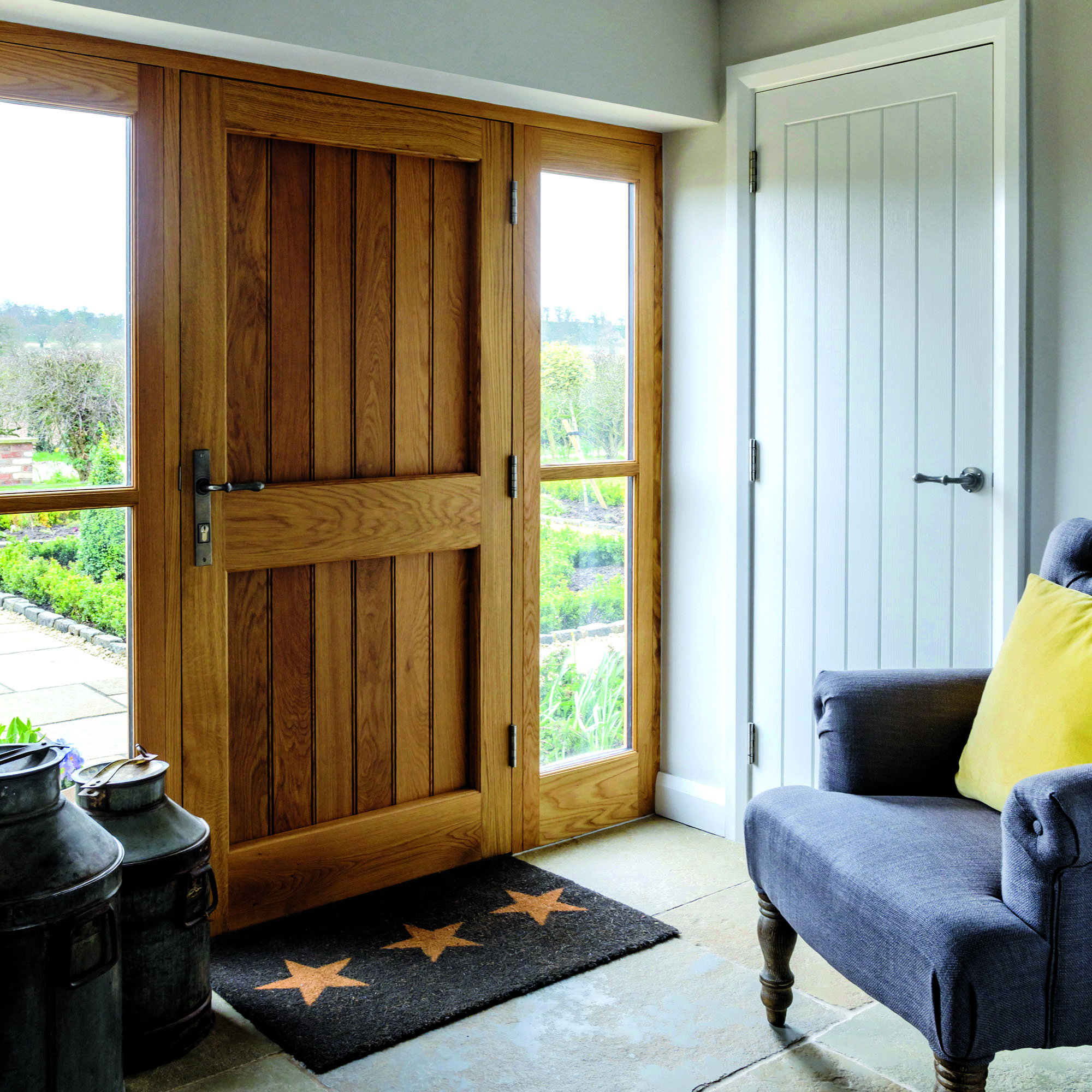
Wood is a popular choice among homeowners, as it looks good, is eco-friendly (if sourced from sustainably-managed forests) and suits traditional properties — look for hardwoods that bring a variation of hues and style to your home, such as oak or walnut. ‘Timber doesn’t date, and it can be renewed by sanding back and retreating,’ adds Elizabeth Assaf, Designer and Co-Founder at Urban Front. ‘It’s easy to be creative with a bespoke design using wood.’
Get the Ideal Home Newsletter
Sign up to our newsletter for style and decor inspiration, house makeovers, project advice and more.
However, wood does require careful upkeep to keep it in good shape, says Thomas: ‘Solid wood doors offer that classic charm and decent insulation, but they do need some upkeep to avoid warping over time.’ Wood front doors will need to be treated with oil, lacquer or paint to withstand the weather and this will need to be redone every six to eight years. 'Just remember: don’t let looks be the deciding factor,' adds Thomas. 'A beautiful wood door might be tempting, but it might not be the best choice for a sun-soaked south-facing entry unless it’s protected from the elements.'
In terms of price, a hardwood front door is a more premium option with a higher price.
2. uPVC front doors
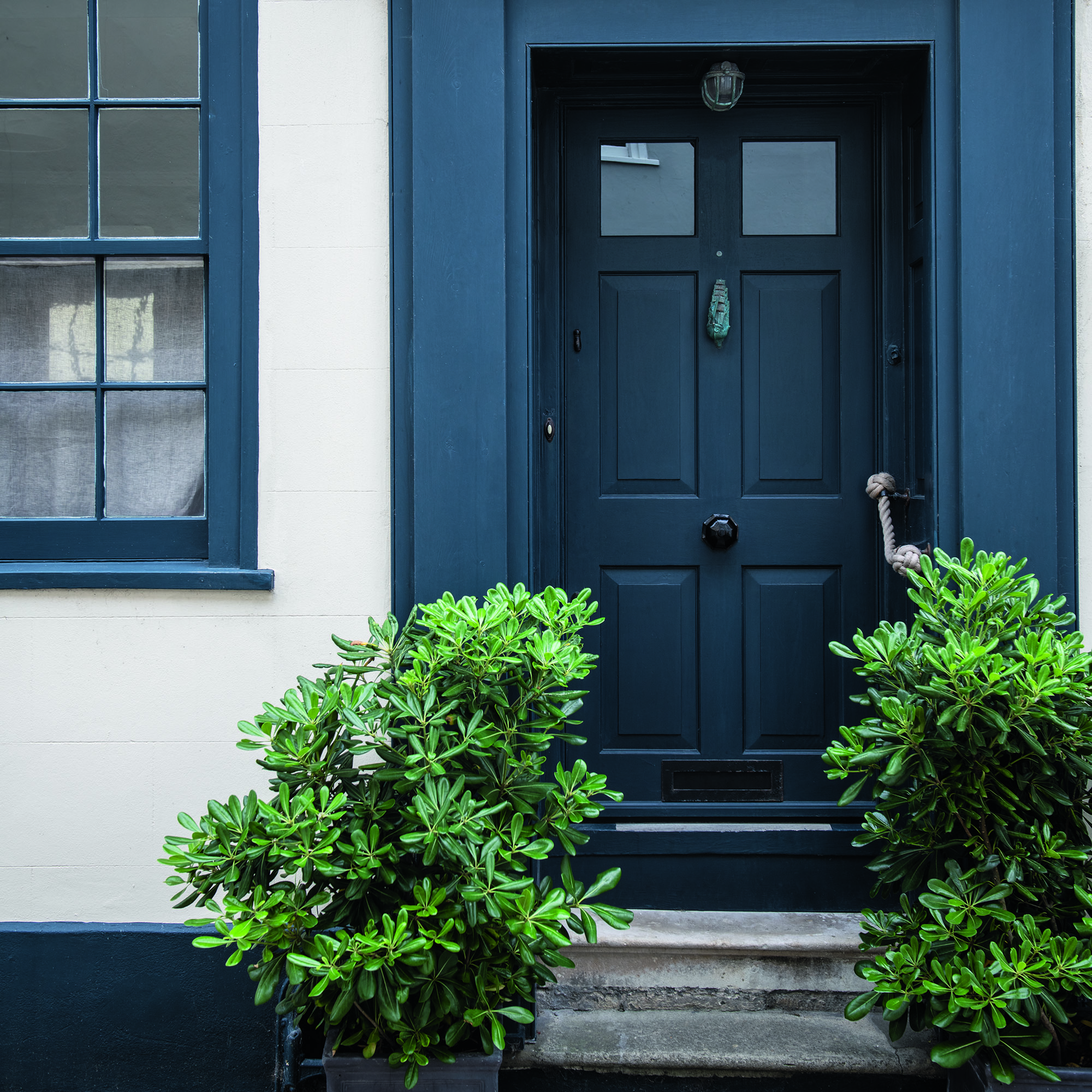
If you want to replace your front door on a budget, then plastic is an affordable and low-maintenance option. Martin Matthews, assistant buyer of timber and joinery at B&Qadds: 'Not only is this low maintenance material great value for money, its weather resistant qualities also make it an ideal choice for those looking for a durable and long-lasting door.'
Front doors made from uPVC are also available in a variety of colours and designs, which gives you plenty of options when it comes to choosing a door that suits your home. ‘Gone are the days when white was the only colour available,’ adds Jill McLintock, Head of Product Marketing at Everest. ‘Anthracite grey, for instance, is an increasingly popular choice at the moment, for modern and more traditional properties alike.’
While they might suit your budget, uPVC doors have a limited lifespan and aren't easily recycled, which may be a deal breaker from a sustainability point of view.
3. Metal front doors
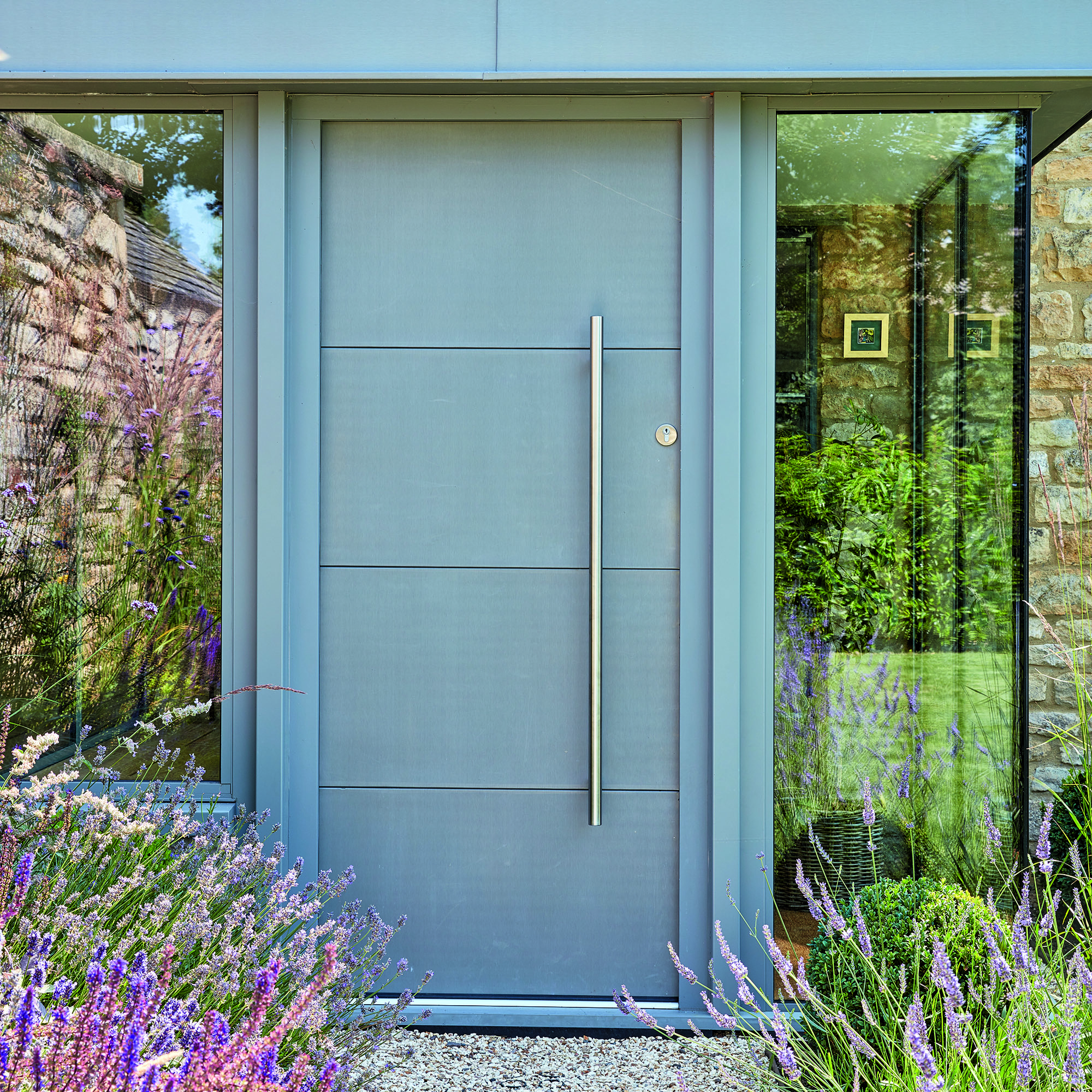
Metal is gaining popularity as a material for front doors, thanks to its strength, security, energy efficiency and low maintenance. Steel doors are super-strong, but can be heavy, so it's worthwhile looking at a lightweight alternative — aluminium. ‘Aluminium front doors are incredibly strong and secure, but also light and resilient to adverse weather conditions,’ says Victoria Brocklesby, COO at Origin.
From a sustainability perspective, aluminium front doors tend to offer low U-values thanks to their insulating core, which means they'll help keep your house warm. Aluminium is also infinitely recyclable.
What is a U-value?
U-values are the method for measuring heat loss through a product, where low figures indicate better performance.
When it comes to maintenance, aluminium front doors are virtually maintenance-free, which is a huge positive for many homeowners.
But these benefits do come at a a premium cost. ‘Aluminium is positioned at the top of the price range; however, it offers clear benefits to homeowners, providing the very highest standards in terms of security, construction, performance, and choice,’ says David O’Mara, Marketing Manager at Hörmann UK.
While an aluminium front door might be more expensive upfront, it's durability, lifespan and efficiency can mean it turns out more cost-effective in the long run.
4. Composite front doors
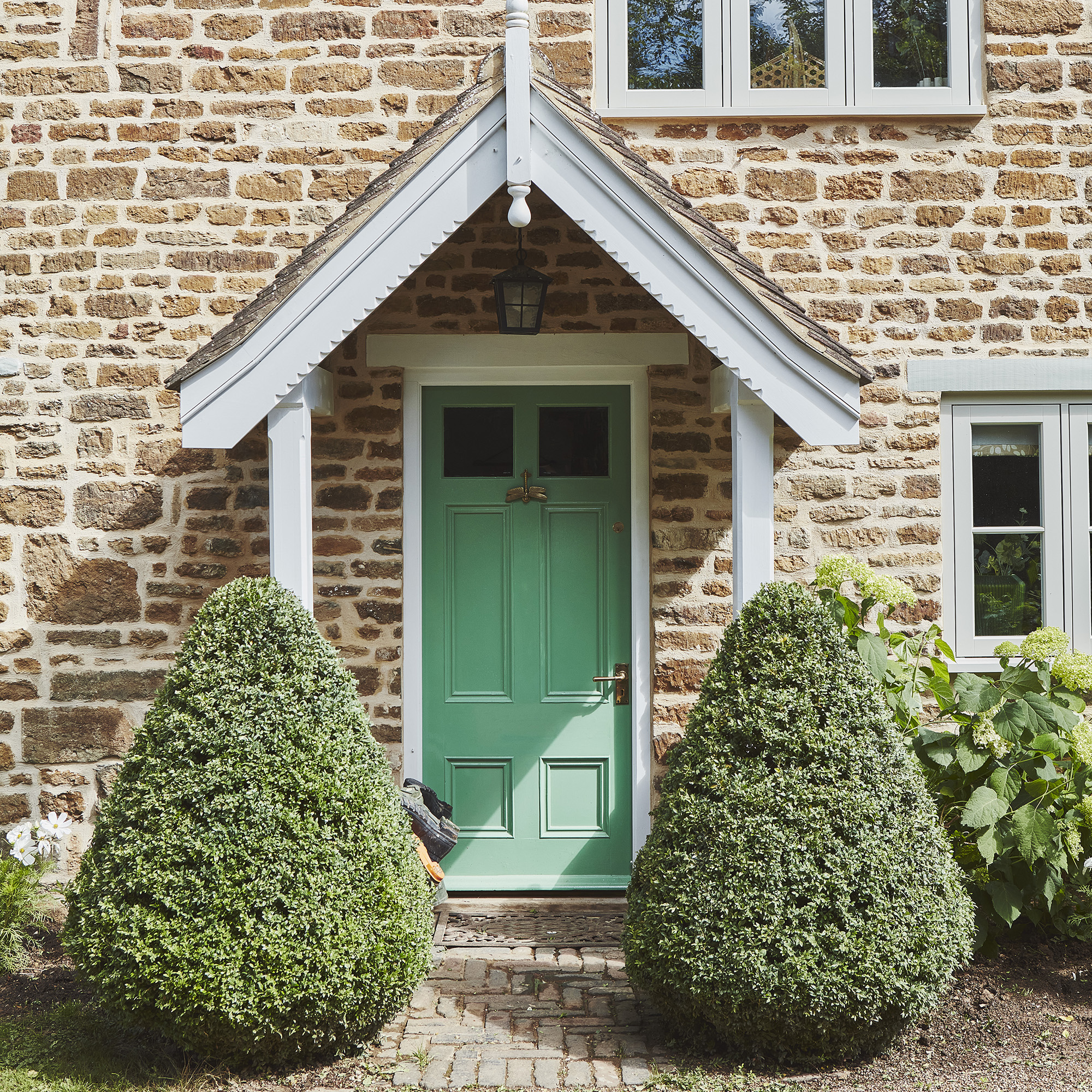
Composite doors are made from several different materials. They feature a reinforced frame core with a thermally efficient layer, making a strong and high performing door. The outer material can be a variety of materials, including uPVC, GRP (glass reinforced plastic) or timber.
Composite doors are a mid-price option – not as cheap as uPVC but not as expensive as aluminium or hardwood timber products. They are generally low-maintenance doors; simply keep them looking fresh with a soft cloth and warm soapy water. They also come in a wide range of finishes and paint colours with a broad choice of handles and door accessories, so you can completely personalise the door to fit the style of your property.
What are the glazing options for your replacement front door?
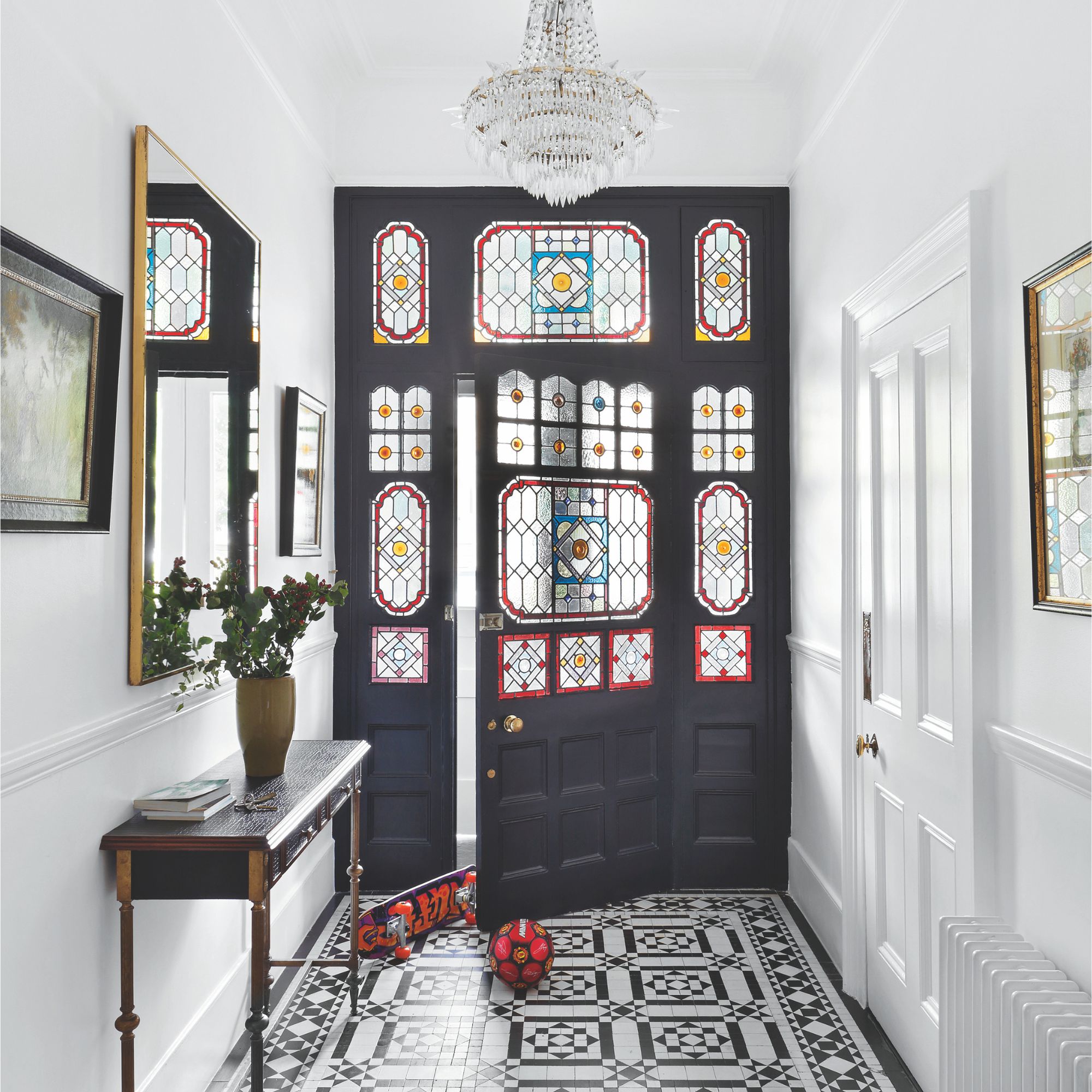
There are lots of options for your door’s glazing and glass will help to turn your entrance into a statement feature. You might also be able to choose between double and triple glazing. But you'll need to make sure the glazing design you choose suits your choice of door.
‘The look and/or colour of the glazing is always a matter of personal choice, but a Georgian-style composite door would suit different glazing options to a 1930s Art Deco-style door, and different again to a more contemporary aluminium door,’ says Jill McLintock from Everest.
Security is also key: ‘Laminated glass is made by adding a sandwich of plastic laminate between two panes. This holds the glass together when broken, making it very difficult to gain access to the home in the event of an attempted break-in,’ adds Jill. Your chosen glass should meet Building Regulations requirements, but do check with your supplier.
How can I tell if a replacement front door is energy efficient?
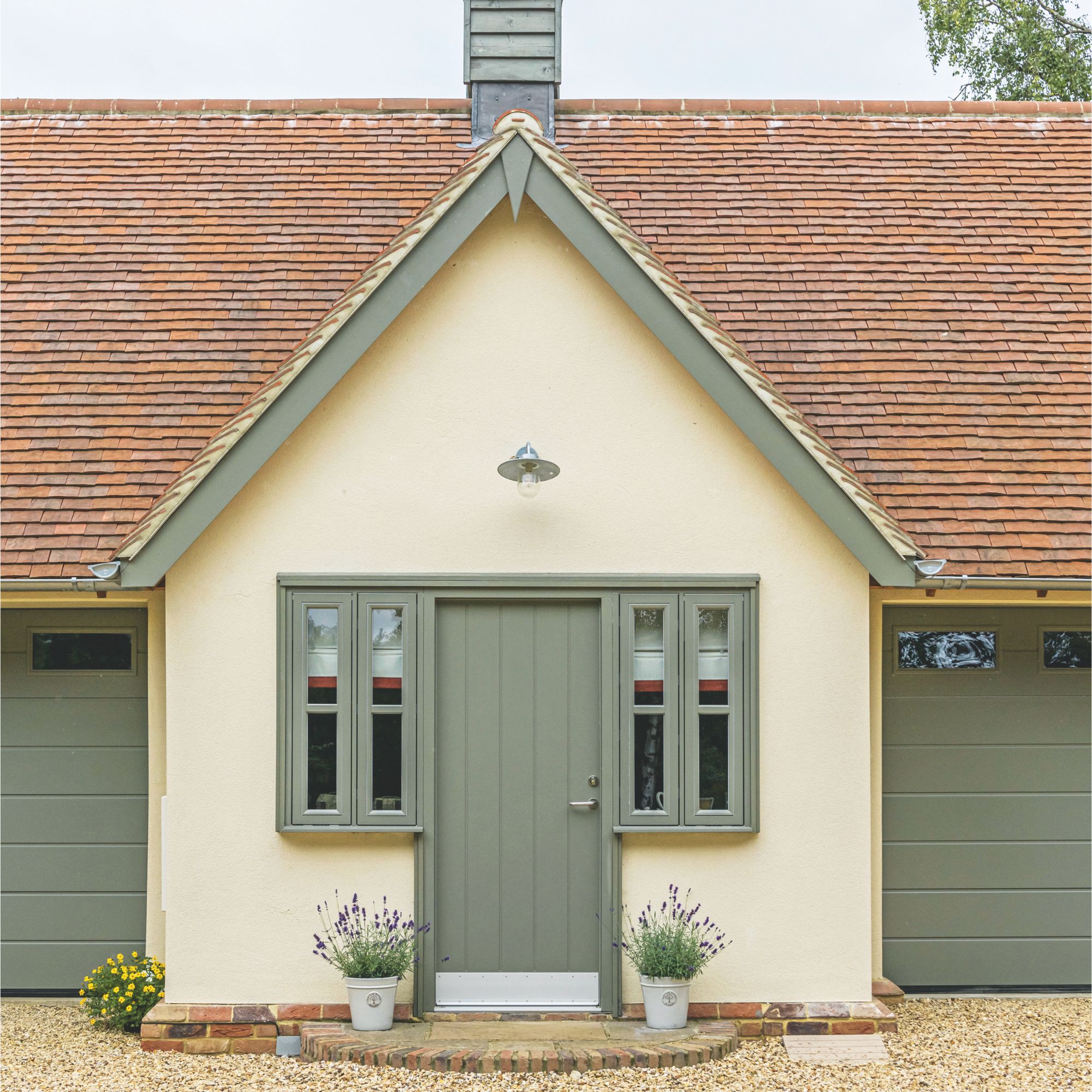
When you're replacing your front door, you'll want to check how energy efficient it is. After all, you don't want to go to all that effort and then find you have to worry about how to draught-proof your front door.
If you are looking at various front door types, it's worth noting their U-values, which indicates heat loss. The lower the U-value, the lower the heat loss. By bearing this in mind, you can ensure that you pick a front door that will help keep your home warm, and your energy bills under control.
What security features should you look for?
Your locks are obviously a main consideration when it comes to your home’s security. The door type could impact what type of lock is best. For instance, traditional timber doors might feature a pair of locks (such as a mortise lock and night latch), whereas other styles may use multi-point locking systems. Many home insurance companies will specify that locks need to conform to British Standard 3621. You can expect modern products to meet this, but it’s always worth double checking. Ask your door provider what security accreditations their products carry.
If you want to incorporate some smart tech into your home, then your front door is a good place to start. ‘Doors can be opened and closed via radio buttons, finger-scanners or a hand-held transmitter, whilst our app provides control from a smartphone,’ says David O’Mara from Hörmann UK. Video door bells are also available if you don’t want to include a viewing pane in your door.
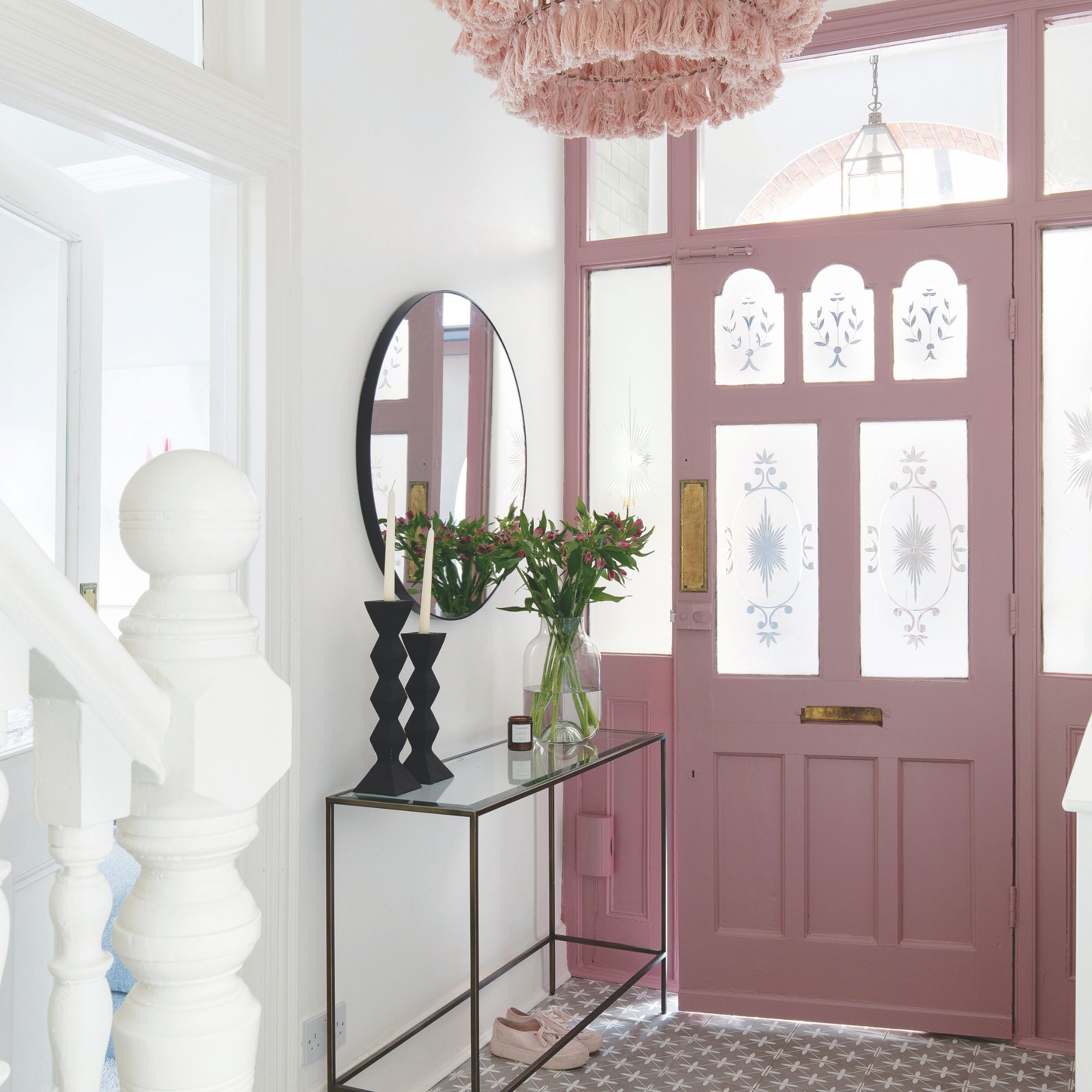
Can you replace a front door without replacing the frame?
Whether you can just replace the door itself or need to replace the door and frame, will depend on the condition of your existing frame, and the kind of door you plan on buying.
If you are replacing like-for-like, then you may be able to just replace the door, which may help to keep costs down. But many front doors are sold as doorsets. ‘A doorset is the door, frame, and accompanying locks/door furniture all fitted and ready for installation,’ says Elizabeth Assaf. ‘If you change only the door, the new door has to be the same thickness and it would need a good carpenter to redo hinges, locks etc.’
If you are opting for a completely different type of door, then a doorset made for your aperture’s specific measurements, may actually be the most suitable option.

How much does a replacement front door cost?
How much you pay for your replacement front door will depend on the material you choose and whether you opt for bespoke glazing or hi-tech security features. In most cases, costs include installation.
At the budget end, you could pay about £400, while the upper end of the scale could hit £3,000 or more. Make sure you have an idea of your budget when you shop around to avoid disappointment.
If you aren't sure where to source your new front door, we've listed some helpful options below:
Arrange to see the doors in person if you can to make sure you choose the right option.
Are front doors easy to replace?
Replacing your front door is usually relatively easy, and should take anywhere from a couple of hours to a day, depending on the complexity of the task.
If you are a competent DIYer you might be tempted to install it yourself, but this isn't usually recommended as the front door is crucial to your home's security and thermal efficiency. This means it's vital that it's done correctly, so that the door performs as it should. ‘Bespoke front doors require expert installation from experienced tradespeople, so we would never recommend that homeowners install products themselves,’ says Victoria Brocklesby. ‘If done incorrectly, it can compromise the integrity of the door and void the guarantee.’
If you're not in a position to replace your front door right now, there are multiple ways you can make your existing front door more attractive instead.

Sarah Handley has been Ideal Home’s Section Editor for Renovation since September 2024, following three years of looking after the site's home finance content. She has been a journalist since 2007 and has worked for a range of titles including Homebuilding & Renovating, Real Homes, GoodtoKnow, The Money Edit and more.
- Rhoda ParryContributor
You must confirm your public display name before commenting
Please logout and then login again, you will then be prompted to enter your display name.
-
 Will a conservatory add value to your home and how can you maximise it?
Will a conservatory add value to your home and how can you maximise it?This is what the pros say
By Amy Reeves
-
 I’ve been looking for a new signature scent for my home and The White Company's new fragrance is the exact summer holiday smell I needed
I’ve been looking for a new signature scent for my home and The White Company's new fragrance is the exact summer holiday smell I neededSantorini smells fresh, summery and sophisticated
By Kezia Reynolds
-
 How to remove algae from garden walls in five steps – and the cleaning product experts rave about for tackling it fast
How to remove algae from garden walls in five steps – and the cleaning product experts rave about for tackling it fastExperts share their top tips for getting garden walls algae-free
By Katie Sims